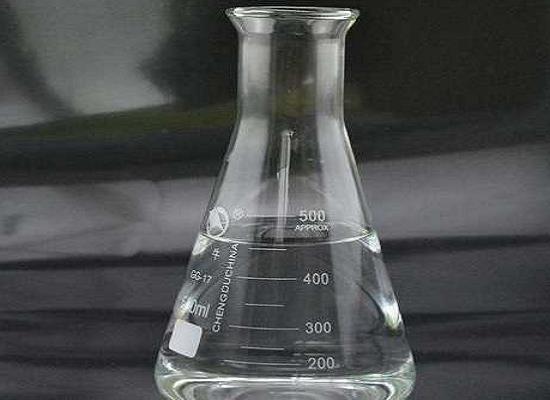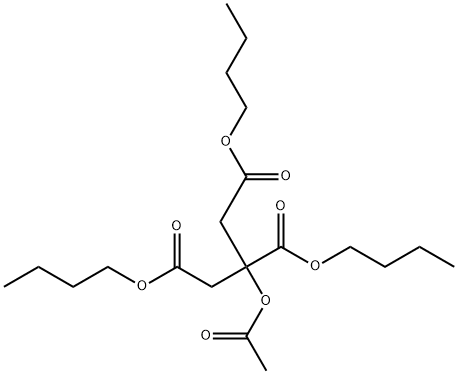Acetyl Tributyl Citrate: Pharmacokinetic Properties and Potential Health Risks
General Description
Acetyl tributyl citrate is a commonly used plasticizer in various products. Studies have shown that its pharmacokinetic properties differ depending on the route of administration. When administered intravenously, it follows a two-compartment model, indicating slower distribution to tissues. However, oral administration at higher doses leads to nonlinear elimination, making it difficult to calculate its elimination half-life. Exposure to Acetyl tributyl citrate has been found to negatively impact ovarian follicle growth and viability, both in vitro and in mice. This suggests potential toxic effects at low dosages. Additionally, there are concerns about its extensive use in coating materials for pharmaceuticals. Furthermore, Acetyl tributyl citrate has been linked to obesity and non-alcoholic fatty liver disease (NAFLD). Studies on mice have shown increased body weight gain, body fat content, liver steatosis, and altered gene expression related to lipid metabolism. These findings indicate that Acetyl tributyl citrate may be an environmental obesogen with a risk of inducing fatty liver. Therefore, the safety of its application in consumer products needs to be re-evaluated.

Figure 1. Acetyl tributyl citrate
Pharmacokinetic Properties
Acetyl tributyl citrate is a chemical compound commonly used as a plasticizer in various products. Understanding its pharmacokinetic properties is important for assessing its safety and potential toxicity. Studies have shown that when administered intravenously, Acetyl tributyl citrate follows a two-compartment pharmacokinetic model, indicating that it is distributed to certain tissues at a slower rate. However, when administered orally at a higher dose, the elimination of Acetyl tributyl citrate appears to be nonlinear, making it difficult to calculate its elimination half-life. This could be due to the saturation of absorption, metabolism, or elimination processes at high doses, leading to erroneous measurement of oral bioavailability. Furthermore, research has indicated that exposure to Acetyl tributyl citrate may have negative effects on ovarian follicle growth and viability. In vitro exposure to Acetyl tributyl citrate increased the number of nongrowing follicles and showed signs of disrupting follicle function at low concentrations. Oral administration of Acetyl tributyl citrate in mice resulted in a decrease in the number of follicles present in the ovary. Given these findings, further investigation is needed to assess the potential toxic effects of Acetyl tributyl citrate at low dosages. While previous studies have suggested that Acetyl tributyl citrate is safe at high doses, attention should still be given to its extensive use in coating materials for pharmaceuticals. The pharmacokinetics of Acetyl tributyl citrate should be studied to ensure its safe use, and the exposure levels of ATBC in plasma and other biofluids need to be investigated. 1
Potential Health Risks in Obesity and Fatty Liver
Acetyl tributyl citrate is a non-phthalate plasticizer widely used in various consumer products, including food packaging, personal care products, medical devices, and children's toys. However, exposure to Acetyl tributyl citrate has been suggested as a potential contributor to the rising incidence of obesity and non-alcoholic fatty liver disease (NAFLD). In a study evaluating the safety of subchronic exposure to environmentally-relevant concentrations of Acetyl tributyl citrate, C57BL/6J mice were orally exposed to Acetyl tributyl citrate for 6 or 14 weeks. Results indicated that Acetyl tributyl citrate exposure led to increased body weight gain, body fat content, and size of adipocytes, as well as induced liver steatosis in mice. In vitro experiments also showed that Acetyl tributyl citrate treatment increased intracellular lipid accumulation in hepatocytes. Transcriptome sequencing, qRT-PCR analysis, and western blotting revealed that Acetyl tributyl citrate exposure affected the expression of genes involved in de novo lipogenesis and lipid uptake. Based on these findings, it is suggested that Acetyl tributyl citrate may be a potential environmental obesogen with metabolism-disturbing and fatty liver-inducing risk. Therefore, the application of Acetyl tributyl citrate in many consumer products should be carefully re-evaluated to ensure its safety. 2
Reference
1. Kim H, Choi MS, Ji YS, et al. Pharmacokinetic Properties of Acetyl Tributyl Citrate, a Pharmaceutical Excipient. Pharmaceutics. 2018;10(4):177.
2. Zhang W, Jie J, Xu Q, et al. Characterizing the obesogenic and fatty liver-inducing effects of Acetyl tributyl citrate (ATBC) plasticizer using both in vivo and in vitro models. J Hazard Mater. 2023;445:130548.
Related articles And Qustion
Lastest Price from Acetyl tributyl citrate manufacturers

US $10.00/KG2025-04-21
- CAS:
- 77-90-7
- Min. Order:
- 1KG
- Purity:
- 99%
- Supply Ability:
- 10 mt

US $770.00/kg2025-04-21
- CAS:
- 77-90-7
- Min. Order:
- 1000kg
- Purity:
- 99%
- Supply Ability:
- 20 tons



